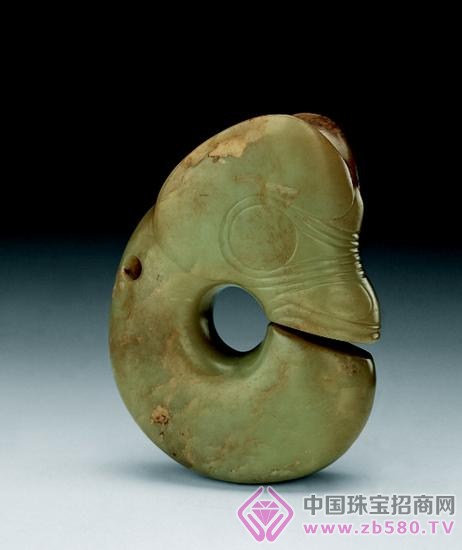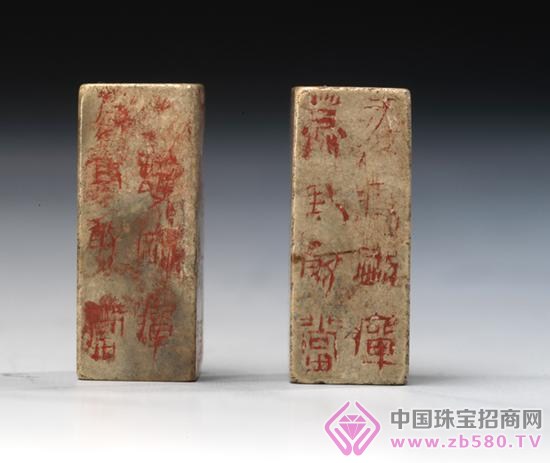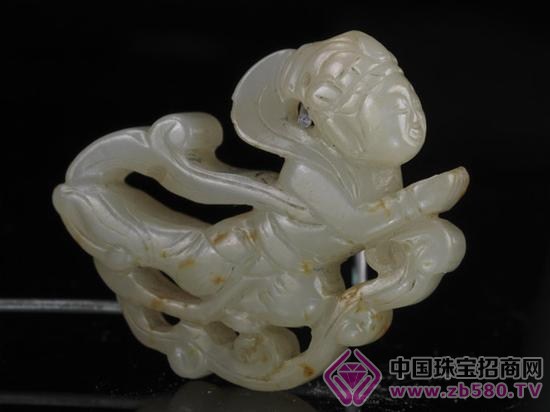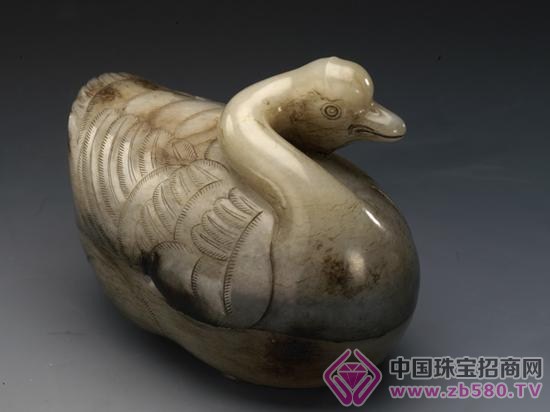White marble double glutinous rice The Chinese nation has a special liking for jade. They have created countless works of art in the course of the development of jade in the past 10,000 years. They are an inseparable part of the splendid culture of the Chinese nation. They have many types and uses. Amazingly amazing. The Tianjin Museum has more than 10,000 pieces of jade articles, which are ancient and modern, rich in variety and exquisite in appearance, and enjoy high reputation in the cultural and international circles at home and abroad. Figure 1 Neolithic Age Topaz Pig Mysterious and quaint prehistoric jade The Neolithic jade is about 8000-4000 years ago. It mainly consists of three major types of production tools, decorative jade and ceremonial jade. It has a large number, simple shape, simple craftsmanship and rich cultural connotations, especially in terms of mythology, religion and witchcraft. Created the climax of the early Chinese jade. There are many kinds of jade artifacts in the Neolithic Age. The production tools include axe, hoe, chisel, knife, decorative jade ring, bracelet, three-hole device, turtle shell decoration, 鸮-shaped peony, animal face pattern, etc. , ç®, åœ, 勾云形佩, oblique mouth cylinder and jade pig dragon. The collection covers five archaeological culture types, namely Xinglong Culture (about 8000 years ago), Hongshan Culture (about 5500 years ago), Liangzhu Culture (about 5000 years ago), Shijiahe Culture (distance) It is about 4200-4000 years ago and Longshan Culture (about 4,500-3,500 years ago). Among them, the museum's Xinglong Culture Qingyan Pipe, Liangzhu Culture Qingyu Temple, Shijiahe Culture Tiger Head Shaped Jade Beads and Longshan Culture Eagle Dig Faces are typical artifacts of various cultural types, which are rare. Not only that, but our library is also known for its Hongshan culture collections. It basically includes the standard instruments unearthed from the tombs of Hongshan culture. The collection of jade pigs, hook-and-clouds, oblique-tubes, and scorpions are also the characteristics of Hongshan culture. The typical equipment, such a collection foundation also laid the important position of the Tianjin Museum Hongshan Culture Jade in the forefront of the National Museum. The collection of the Neolithic Red Mountain Culture Topaz Pig Dragon is 14.1 cm high and 10.4 cm wide. The body is fat and the pair of holes in the neck should be used for wearing. This cultural relic is highly similar to the characteristics of the jade pig dragon unearthed from the Niuheliang tomb site. The academic community generally believes that this model is derived from livestock pigs closely related to human life. This highly generalized image of the pig head should be a totem worship that has been mythologically ancient. The collection of the Neolithic Hongshan culture sapphire oblique mouth cylinder, high 9, upper caliber 9.4, lower caliber 7.1 cm. The upper end is obliquely cut, the edge is sharpened along the edge, and the lower end is flush. This type of shape is unearthed in Hongshan culture, and it is also a kind of excavation of Niuheliang ruins. A slanted tubular shape unearthed from the No.1 tomb No. 4 of Niuheliang, the pillow was unearthed. Under the tomb of the tomb, some scholars speculate that it is used for hair, so it is also named "Hoop". The production process of this type of modeling is extremely difficult, and the utensils are generally too large. If it is only used for hooping, it may not be overkill, but it is unearthed from the head of the tomb. "Said the text" records: "Ling, the spirit and the witch also, the jade god." Therefore, such artifacts should be the sacrifices of the gods used in the great sacrificial activities before the witch. Shang Dynasty jade ware In the early stage of the Shang Dynasty jade (1600-1300 BC), the cultural relics unearthed from Erligang, Zhengzhou, Henan Province were represented. At this stage, there were few types of jade artifacts, and the shape of the jade was simple. The main shapes were shovel, handle, and Ge. In the later period (1300-1046 BC), several tombs in the Yin Ruins of Anyang, Henan Province, especially the women's tombs, were represented. The artistic level of the unearthed cultural relics is extremely high, which can be said to represent the highest achievement of the Shang Dynasty jade. The collection of jade articles on the collection of merchants is vivid, and the crafts are exquisite. The late Shang Dynasty collections such as Feng-shaped Pei, Long-shaped dragonfly, jade elephant, jade dragonfly, jade rabbit and Qiaoshen pine frog are all similar to the Anyang Yinxu cultural relics. The collection of the Shang Dynasty is a straight line of 15.5 meters wide and 3.5 cm wide. The upper width is narrower. The lower end wears a hole, the upper end of the arc is out of the blade, and the body is decorated with a straight line. This device is extremely similar to the eight pieces of Yugui unearthed from the woman's tomb. It should be used as a ritual device. In "Book of Rites?", it is recorded in the book: "The Yin people respect God, and the people are led by the gods. The literature confirms that merchants use jade to respect the gods and gods, reflecting that the rulers of the merchant kings regard jade as a symbol of supreme honor and supremacy. Reinventing the innovative Zhou Dynasty jade The amount of jade unearthed in the Western Zhou Dynasty is extremely large, and the total amount of domestic and foreign products is quite impressive. At this time, the jade wares were separated from the former for the witchcraft service and the function of the ghosts and gods. They became an indispensable ritual for the Western Zhou etiquette activities, and gave new ideas and connotations. This also greatly promoted the prosperity and development of the Western Zhou jade carving industry. The large-scale group jade with complex structure is a new variety of Western Zhou jade. The collection of the Western Zhou Shuangyu double-phoenix bird pattern, carved two symmetrical birds, the body is considered a animal face. The upper edge of the jade has six holes in one row, ten holes in the lower edge, and a large hole in the side of the phoenix. Compared with the large group of jade plaques unearthed in the Jinhou cemetery and the cemetery of the Shu State in the Western Zhou Dynasty, it is speculated that this cultural relic should be an important component of the group, which is of great value to the research group Yupei composition and Peiyu system. During the Spring and Autumn Period and the Warring States period, the social turbulent political changes, the slavery society gradually collapsed, the ritual collapsed, the jade ritual function gradually lost its sacred status, and people began to pursue the aesthetic and practicality of jade. The decorative jade articles of the Spring and Autumn and Warring States are quite developed, and the style is one of the new. There are many varieties with exquisite craftsmanship and unique forms. In this period, there are various kinds of jade articles in the collection, such as grain ridges, grain rings, cloud patterns, animal face plaques, rope plaques, and so on. During this period, the decorative jade is more casual than the Western Zhou Dynasty. The form is diversified. The grain, the moiré and the crepe are also relatively new decorative patterns. The collection of the Warring States Sapphire Dragon Jade is a typical masterpiece. The symmetrical distribution of the double dragons and double cymbals is the theme of the ornamentation. The double dragons look back and the dragon body is in the shape of “Sâ€. The dragons are intertwined with each other, and the exquisite and exquisite appearance is unmistakable. It is a precious cultural relic of the Warring States period. What is more worthy of attention is the collection of the martial arts of the Warring States Period, which is a real example of the ancient Qigong cultivation. Height 5.4, diameter 3.4 cm. The shape of the device is 12-sided prismatic body, with inscriptions on each face, a total of 45 characters. The center has a circular hole that has not penetrated from the bottom to the top. The wall thickness of the hole is 0.5 cm. Without sanding, it is speculated that it may be the tip of the rod at the top of the column. . The inscription discusses the whole process of breathing and qi. It is the earliest record of qigong cultivation in ancient China. Its ingenious inscriptions, unique shapes and exquisite craftsmanship are the subjects of scholars' study and discussion, and have extremely high scientific value. And the value of writing. Han Qingyu is just strict Han Dynasty jade burial Most of the functions of making jade articles in the Han Dynasty were to drive away evil and pray for blessing. The funeral jade appeared from the Western Zhou Dynasty, and the Han Dynasty reached its peak. This was related to the Taoist religious concept of the Han Dynasty, which advocated the immortality of immortality. The funeral jade became an important part of the Han Dynasty rulers who used jade to protect the bones and the hierarchy. Tools, so the Han Dynasty thick burial was all the rage. The collection of burial jade in the Han Dynasty includes scorpions, pig grips, ribs, burial plaques and jade robes, which basically cover the types of burial jade in the Han Dynasty. Speaking of the advocacy of Taoism in the Han Dynasty, I have to mention the collection of the Qing Dynasty jade feathers in the Han Dynasty. The height is 6.7 and the width is 5.3 cm. The upper left end of the person is a man, the hair is flowing backwards, the shoulders are winged, and the hand is bowed to the front. This theme reflects the idea that the shoulder feathers can fly into the fairyland and thus the eternal Taoist religion. The evil spirits of the Han Dynasty are also jade articles of the age-rich characteristics that should be born in this social background, including Gangyan Yan, Si Nanpei and Weng Zhong. These three varieties are involved in the collection. The collection of Han Qingyu is just sturdy, with a height of 2.2 and a width of 0.9 cm. The scriptures are engraved on all sides, and the words are filled with cinnabar. Through wearing, the magic of the spell is used to ward off evil and pray for well-being. There are only a handful of domestically-funded shackles, so they are extremely precious. The outline is a new variety of jade in the Han Dynasty. The representative of this form is the grainy jade unearthed from the Han Tomb of Mancheng, Hebei. The collection of the white jade in the Han Dynasty has a height of 15.7 and a diameter of 13.9 cm. Out of the profile, the eagle squats on the raft, the body is curly and complex, the lines are flexible and beautiful, and the craftsman is the perfect superb carving skill. The charm of the Wei, Jin, Southern and Northern Dynasties The Wei, Jin, Southern and Northern Dynasties were an important period of change in Chinese history. The North and South nationalities were greatly integrated. The color of mysterious majesty in the jade articles of the Shang and Zhou dynasties basically ended, followed by the aesthetic jade with decorative jade and appreciation jade as the main body. The collection contains the yellow jade beasts of the Southern Dynasties, shoulders and wings, and the tail is rolled up. It is squatting, with strong bones and strong heads. It is extraordinary and extraordinary. It is similar to the stone carvings of the former Emperor Chen Wendi in the Southern Dynasties. It is a typical jade beast in this period. Carved style. Tang Baiyu Feitian Colorful Tang and Song Dynasties During the Sui and Tang Dynasties, China's feudal society was unprecedentedly prosperous, politically stable, and the country was rich and powerful. The cultures of all ethnic groups were integrated with each other. In this social environment, the jade art with a long history has once again demonstrated a new look and rich posture. The ritual jade that was raised during the Sui and Tang Dynasties was a jade belt. This style has been a symbol of the ruling class from the Shang Han Shangxing to the Sui and Tang Dynasties. In the "New Tang Book? 舆 Service", the use of jade belt material by Wang Chen aristocrats was clearly defined according to the grade. The collection of the sapphire slabs in the Tang Dynasty and the sacred slabs unearthed in the Hejia Village of Shaanxi Province are extremely similar in size, decoration and engraving. The length is 3.5 and the width is 3.8 cm. The person, the Yin line shows details, and each of the back corners has a target nostril. The music pattern is the most common pattern in the Tang Dynasty jade belt. The image is mostly Hu people. The rise of this pattern is a powerful testimony to the introduction of the Western Region culture on the Silk Road of the Tang Dynasty. Buddhism flourished during the Sui and Tang Dynasties, and Buddhist jade was also the main category of the Tang Dynasty. Feitian is the most prominent pattern of Buddhism in the Tang Dynasty. It can often be seen in Dunhuang murals. The prototype of Feitian is the incarnation of the dry aunt and the tightness of the Buddhist gods. They flew into the world of bliss, played the piano and sang, and entertained the Buddha. The collection of Tang Baiyu flying, very precious, high 2.9, 3.6 cm wide, with long skirts, a stream of clouds under the body, the body is light and light like a man-like dance in the sky. On the basis of absorbing foreign achievements, the jade articles of the Tang Dynasty strive to be unconventional. The emerging jade varieties are rich in content, and its spirit of openness and learning is actually inspired by today. Song Qingyu Goose Box The jade in the Song Dynasty pursued an elegant, simple and natural form of artistic expression. This was inextricably linked to the re-use of the court by the literati in the society, especially in the cultural field. Concise, lively and lively beauty is a common feature of jade artifacts at that time. The collection of the Qing Dynasty goose-shaped box in the Song Dynasty is 8.4 inches high and 11.8 cm wide. The goose is red and convex, and the neck is round and round. The body is covered with short and thin Yinxian feathers and tails. The bottom of the box is embossed with double eyes. A gentle and elegant beauty. The Liao Dynasty was founded by the Qidan people, and the rulers tried to receive the Han culture, which also greatly promoted the economic and cultural development of the Qidan people. The collection of Buddhist jade, such as Yufeitian and Jialouluo in Liao Dynasty, is the historical evidence of the Liao rulers advocating Han Buddhism. The Liao Dynasty has long lived in the vast grassland, leaving the traditional customs of the Spring and Autumn Period. It is mainly hunting. The collection of the agate armor of the Liao Dynasty is the eagle of the Qidan people to protect their arms during hunting. It is basically the same as the white jade armor unearthed from the tomb of Princess Chen Guo of the Liao Dynasty. The Jin Dynasty Jurchen is a powerful nation that has risen in the northeast after the Liao Dynasty. It also has an eclectic mix of traditional culture such as the beliefs and sacrifices of the nation. Unearthed and handed down jade articles are more abundant. There are é•‚ é•‚ é•‚ 〠〠〠〠〠〠〠〠〠〠〠〠〠〠〠〠〠〠〠〠〠〠〠〠〠〠〠〠5.9 5.9 5.9 5.9 5.9 5.9 5.9 5.9 5.9 5.9 5.9 5.9 5.9 5.9 5.9 5.9 5.9 5.9 3 cm wide, the main body decoration is a swan, one end has a flat ring to wear small objects, and the side has a rectangular piercing. The picture is the scene of the nomadic spring eagle to catch the goose. The Yuan Dynasty was a powerful empire with a vast territory. Due to changes in social politics and territory, people's aesthetic tastes have changed. The jade carvings are more rude and unrestrained. The collection of the Yuan Dynasty jade pterosaur dragon-eared ear pot, the body of the sea dragon dragon pattern carving, is extremely majestic, this is the typical proof of the pursuit of rough beauty in the Yuan Dynasty jade carving. The splendid Ming and Qing jade The economic culture of the Ming Dynasty was highly developed, and the production of jade appeared to be a prosperous scene. Not only did the number increase suddenly, but the scope of use and subject matter were also more extensive. The most aristocratic class in the Ming Dynasty used jade as a ritual instrument jade belt. It was an important part of the Ming Dynasty swearing system. Every important event, such as the celebration of the dynasty, was worn from the emperor to the civil and military officials. By the time of Ming Yongle, the number of jade belts has been customized and consists of 20 pieces. These strips are mostly hollowed out and drilled. With the double-layered openwork technique, the pictures show the entanglement of the branches and the dragons. It is an aesthetic taste popular in the Ming Dynasty. There are a large number of archaeological excavations, including the tomb of Wang Xingzu in Nanjing and the tomb of Zhu Tan in Zou County, Shandong Province. The collection contains a complete set of Ming Dynasty white jade enamel strips, totaling 20 pieces, which is perfect in appearance and is rare in the handed down products. The living room and living utensils are also large in existence and diverse in shape. The collection understands the jade pine crane character ear cup, the jasper ear cup, the jade jade pot, the agate ganoderma lucidum wash, the jade Xiangfeng title peach wash, the jade jade grain paperweight, the jade pen holder, etc., all of which are typical works of the Ming Dynasty practical utensils. The jade carving theme that symbolizes the beautiful things in the Ming Dynasty is also very popular. The Ming Topaz is a gratifying scene. It shows the scenes of four children playing, and the extended meaning of "Four Hi" also symbolizes the four happy events of the well-known life; the white jade cup of the Ming Dynasty It is the wineware used by the emperors and aristocrats when they marry. It means that the husband and wife will always be united and beautiful; the white jade crane deer Shouxing means more blessings and more life, and this one thing shows the scene full of life in the Ming Dynasty. The Qing Dynasty was the heyday of Chinese jade making. It inherited and carried forward the jade technology and fashion of thousands of years, and it has created an outstanding work that is difficult to count. The prosperous prosperity of the country and the unprecedented love of the jade and the enrichment of Hetian jade by the emperor (especially Emperor Qianlong) promoted the rapid development of jade articles in the Qing Dynasty and opened up the glorious prospect of jade carving art. The collection of jade articles in the Qing Dynasty is even more beautiful. The Qing dynasty jade enamel enamel, with a diameter of 20 cm and double-sided embossed nine cymbals, is powerful and dynamic. It is a ritual used in important etiquette activities in the Qing Dynasty. The Qing dynasty phoenix phoenix double jade bottle, the Qing dynasty white jade eagle bear åº cup, the white jade jiaqing yu dynasty poem, and so on, are the rare royal palace treasures of the Qing Dynasty. In the Qing Dynasty, the Stan Jade was also popular among the Emperor Qianlong. On the one hand, he adopted a policy of encouraging imports, and on the other hand, he ordered a large number of imitations. The trace jade is thin as a wing, the jade is sleek, the carved leaves are delicate, and it is famous for its different styles of traditional Chinese jade. The collection of clear flower pattern pots, rose-lily lilies inlaid with ruby ​​handles, and lotus-like mirror holders are all excellent works of the traces of Stan jade. Jade Carving Mountain is also one of the shapes of the Qing Dynasty. The picture is a picture of the landscape, the scenery and the characters. It is like a vivid picture. The works of the world are Dazhi Zhishui Mountain, Huichang Jiu Lao Tushanzi and so on. The collection of clear white jade Guanchaozizi, 10.4 cm high, shows the magnificent landscape of the tides of the Qiantang River. The white clouds hang over the sky, the majestic rivers rush from the distance, and the five old people forget to appreciate. This piece represents the highest level of jade carving skills in the Qianlong period.
Get style and built-in support in one with our women's bra tops including seamless, lace, cotton, and sports tops.
Wearing the correct women's sports bra for your activity makes all the difference in your workout. Browse our exclusive seamless bra collection, plus strapless bras, backless and underwire bras,they will give you the confidence to tackle any training session, our sports bras are there to support you from warm-up to cool-down. With comfy soft-touch fabrics, flattering fits, and shape-enhancing styles .
Get the best support for any sport with women's sports bras from China
Sport Bra,Seamless Bra,Yoga Bra,Yoga Tops Shenzhen clothing link Co.,Ltd , https://www.clothinglinking.com



